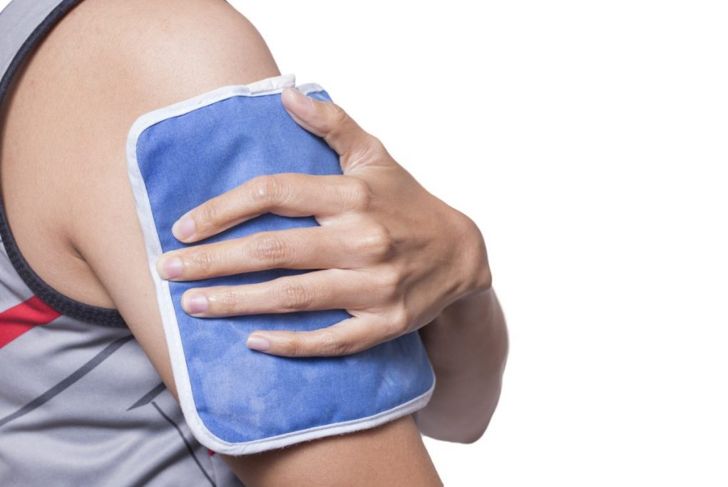Experts believe trigger points are a significant cause and complication of neck and back pain. These sore spots in your soft tissue generally happen around injury sites. When you have a lot of trigger points, your doctor may refer to your condition as myofascial pain syndrome. In trigger point therapy, a medical professional rubs and presses on these sensitive areas to relieve pain. Though experimental and involves a lot of trial and error, trigger point therapy work for many people.
Who discovered trigger points?
Most of the credit for the discovery of trigger points goes to Dr. Janet Travell, the private doctor for former President John F. Kennedy in the 1960s. She was tasked with helping the president overcome chronic back pain, which started when he was in college and lasted throughout his life. Travell was not alone in this discovery, however. Dr. David Simons, whom she met during a lecture on the subject at the Air Force School of Aerospace Medicine in 1960, helped her map out all the trigger points and their pain referral patterns. Together, they wrote the Trigger Point Manual in 1983.
How do trigger points work?
Muscle pain occurs when you injure your muscles or place any repetitive strain on them. The muscles respond by forming trigger points or knots which can make the muscles tighter and painful to the touch. Whenever you press on a trigger point, the muscle fibers shorten and begin what doctors call referred pain. This means that you can have a trigger point in one muscle that makes you feel pain in another area of your body. Because muscles make up 36 to 42 percent of body weight, they have a big impact on your health. Any abnormal muscle function affects your ability to move freely and comfortably.
Primary vs. Satellite Trigger Points
Primary trigger points cause a reaction in a latent trigger point or muscle area. That latent, or secondary, trigger point is called a satellite trigger point. If you address the pain in a primary trigger area, the satellite pain may ease, but you will need to release it to make it go away. Want to know more? If you have an active trigger point, it will channel your pain to another area of your body. Primary can activate satellite trigger points but not vice versa. A satellite trigger point will not create pain in the area where it is located or in other areas until you apply stress to it. That stress activates the trigger point.
How is trigger point pain diagnosed?
There are many conditions that can cause muscle pain. In fact, trigger point pain can be misdiagnosed as other pain conditions including arthritis, carpal tunnel, abdominal pain, tendinitis, sciatica, tension headaches, or pains in the neck, abdomen, shoulder, and lower back. Many doctors begin diagnosis with a physical exam. They may apply gentle pressure to the area where you feel pain and check for the areas that have the most tension. Specific ways a doctor presses on a trigger point result in specific responses that indicate the issue. For example, you might feel a muscle twitch or show signs of pain in a seemingly unrelated part of your body when the doctor applies pressure. Because it is not always simple to diagnose trigger point pain, the doctor may take you through other tests to rule out other possible conditions.
What causes trigger points?
Anything that puts your muscles under stress can cause trigger points, including surgery, bad posture, chronic pain, straining muscles, an injury to your muscles, and diseases such as fibromyalgia. Emotional stress and anxiety can also lead to trigger points. Medical experts believe people under extreme stress clench their muscles repeatedly, which places a strain on them and makes them susceptible to trigger points.
Treatment: Ischemic Pressure
Ischemic pressure is a mechanical treatment for trigger points in which you apply sustained pressure to the area long enough to make the trigger points inactive. You can apply the pressure with your thumb, knuckle, finger or elbow based on the size and thickness of the muscle you are working on. Practitioners apply pressure directly to the center of the trigger point — as much as the patient can tolerate. The practitioner must be skilled enough to stay on the center of the trigger point. Otherwise, there is more pain. Initially, they apply pressure for 10 to 20 seconds and increase the duration as the trigger point begins to release. You may need to repeat ischemic pressure therapy every 2 to 3 days for several weeks, depending on how chronic the problem is and how well you respond to treatment. In most extreme cases, patients need only 3 to 4 treatments.
Treatment: Hot and Cold
The hot and cold approach has worked well for muscle spasms. Its success lies in using both cold and heat to disrupt the message to your muscles to continue spasming. You should apply first a cold pack, then heat to the affected area. Move the packs one at a time at about 1 inch each second from the trigger point to the pain zone. It is important to do this in cycles of two to three minutes. You should also stretch between cycles and repeat if needed. The combination of hot and cold has an effect on the part of the nervous system controlling your muscles.
Treatment: Myofascial Release
One effective treatment for muscle knots involves releasing connective tissue around your muscles with a massage. You or your practitioner should apply cold then heat to the knotted area. Find your trigger point, place your fingers parallel to the muscle fibers and point them into the area where you feel pain. Gradually move your hands away from each other making sure to achieve about 1/4 inch of movement every 15 to 20 seconds. You are done when your hands are about 3 inches apart.
Treatment: Trigger Point Injection
Most people respond well to physical therapy and do not need trigger point injections. Those with fibromyalgia or endocrine disorders are not suitable candidates for injections. During the procedure, a doctor injects a local anesthetic into the painful muscle while you are either sitting or lying down. Patients feel relief in both the muscle and the satellite trigger point. You will not be sedated, and sometimes injections will also contain steroids. You may get more than one injection if more than one injection is affected.
Treatment: Dry Needling
In dry needling, solid filament needles are inserted through your skin and into the muscle. This releases the trigger points and eliminates pain, allowing you to move normally. The procedure is called dry needling because no liquid medicine solution is injected into your body, and it works because the needles create a controlled lesion that can cut through more than 10,000 individual muscle fibers. Your immune system thinks the needles are a foreign invader and starts an inflammatory reaction and immune system response to reduce swelling and pain.

 Home
Home Health
Health Diet & Nutrition
Diet & Nutrition Living Well
Living Well More
More




















